With the circular no. 53 of 12 April 1860 were introduced the new standard-postmarks in whole Russia. These postmarks are -as we see on the card here below- one-ring postmarks with the date on three lines: day in arabic numerals, month in cyrillic abbrevation, year in four arabic numerals. The first postmarks in 1860 were made in Berlin: so these postmarks are uniform in size (26 mm) and shape.
With the introduction a regulation ordered that the cancellation of the postage stamps must be done by the number-postmark, and the date-indication by the new one-circle standard-postmark.
The single circle postmarks have only cyrillic letters (only Moscow and St. Petersburg got a double-ring-postmark).
After the withdrawal of the numerical (dotted) postmarks in 1863, the new circular postmarks were used as datestamps and cancellers.
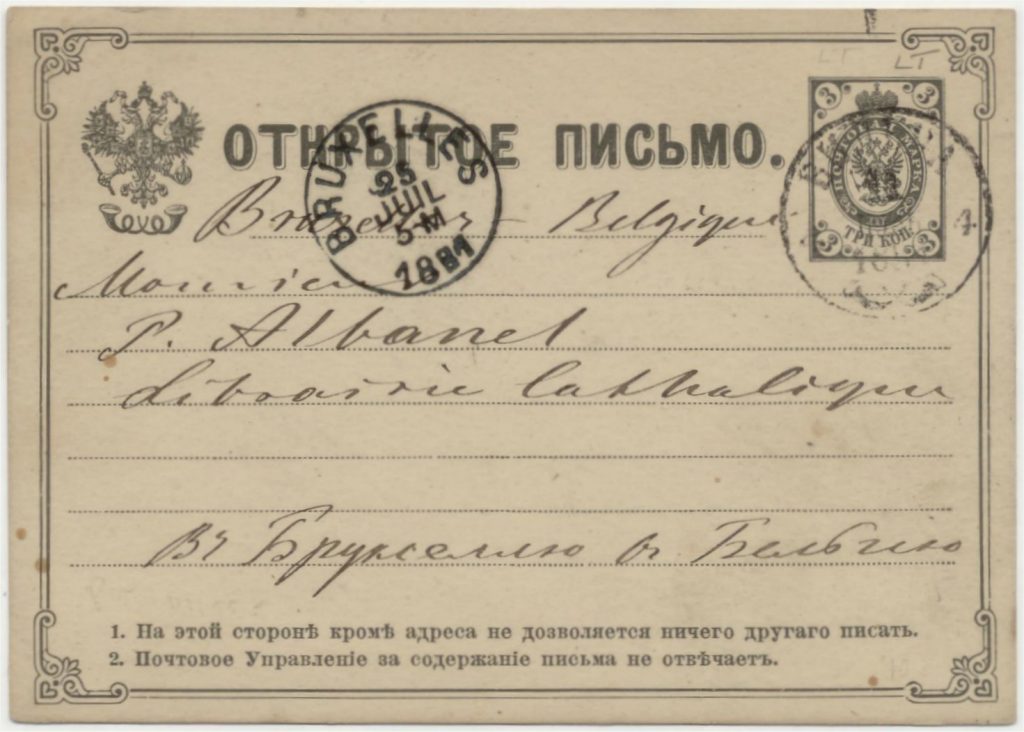
This postcard from Vilnius-serial number 4- ВИЛЬНА (Vilna), in Lithuanian Vilnius, to Brussels (1881) has at the top the place name, under it the day, then the month in cyrillic letters, underneath that the year. At the bottom an ornament, posthorns. In smaller places the name of government came in the place of the ornament, but Vilnius (Wilna) was also the capital of the government Wilna and so it held the ornament.
On this card is used a postmark with serial number 4:
In ’the handbook’ – Pašto Antspaudai = Poststempel in Litauen = P.O. Cancels in Lithuania / V. Fugalevičius. – second ed. 1990: of this type with posthorns also is given an image of ВИЛЬНА – 1 and 2, I suppose there must also be 3.
In this book are also images of this type with ornament without number:
- the two oldest, 1861 (month/day/year) and 1862 (day/month/year) single ring with fleuron and ВИЛЬНО
- single circle with fleuron and ВИЛЬНА: 1870, 1873 (different fleurons)
- double circle with fleuron 1874 with ВИЛЬНА
- two (both 1876) single circle postmarks with fleuron ВИЛЬНА (different fleurons)
- ВИЛЬНА 1 and ВИЛЬНА 2 : posthorns below
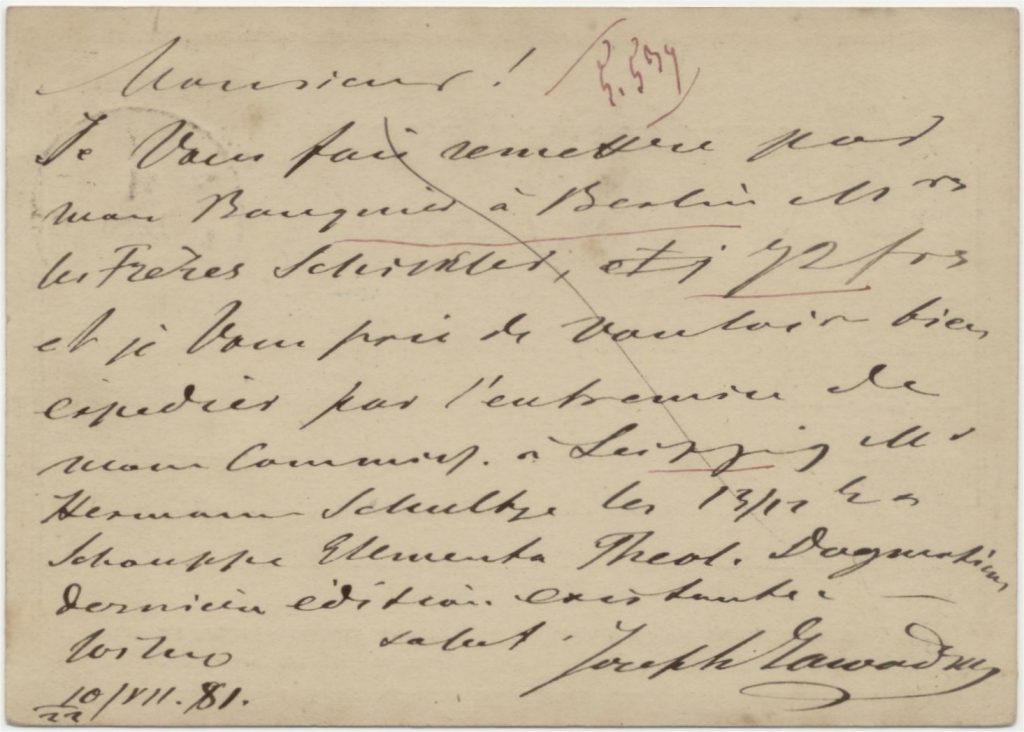
The message of the card has the written dat 10/22. VII.81, 10/22 July 1881: the date written as Julian and Gregorian style. The difference of 12 days must be added to the Julian to covert to the Gregorian calendar.
Classification of the postmark
In the classification of the EESTI-handbook we see on this card above the type 4: with posthorns below.
There is also a subdivision: 4A1 name only, 4A2 name and number and 4A2a name, number and indication П. О. So here we are dealing with type 4A2.
The next type on the card here below – without ornament- has more information: type 6 in this handbook, type post office below and gubernia (when given) at top. Here no indication of Gubernia (type 6B).
Type 6 with date in three lines, month in cyrillic: type 6A (with gubernia above) and 6B (without gubernia).
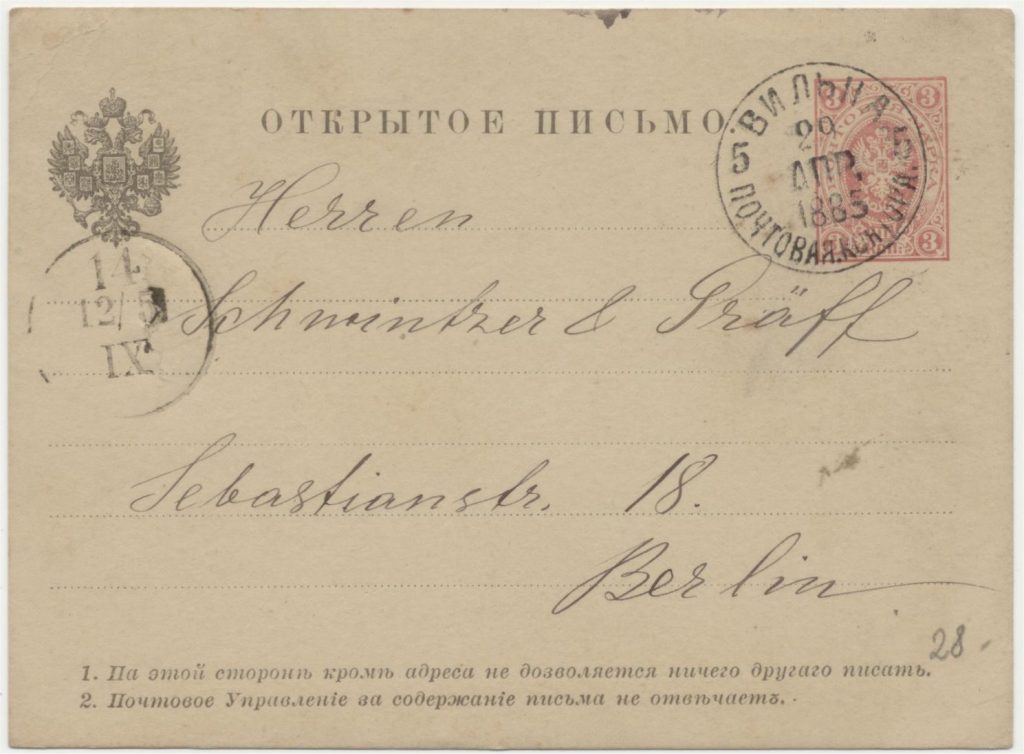
At the bottom is now more information:
ПОЧТОВАЯ КОНТОРА (POCHTOVAYA KONTORA = Post office).
Until 1884 this was a type of post office, which served a large town, as Vilnius was, and was under direct control of the Chief Office (Pochtamt) of the postal district.
Other types offices besides the ‘Post Office’ and ‘Chief Postoffice’ were: Postal sub-office (Pochtovoe Otdelenie) and Post Station (Pochtovaya Stantsiya).
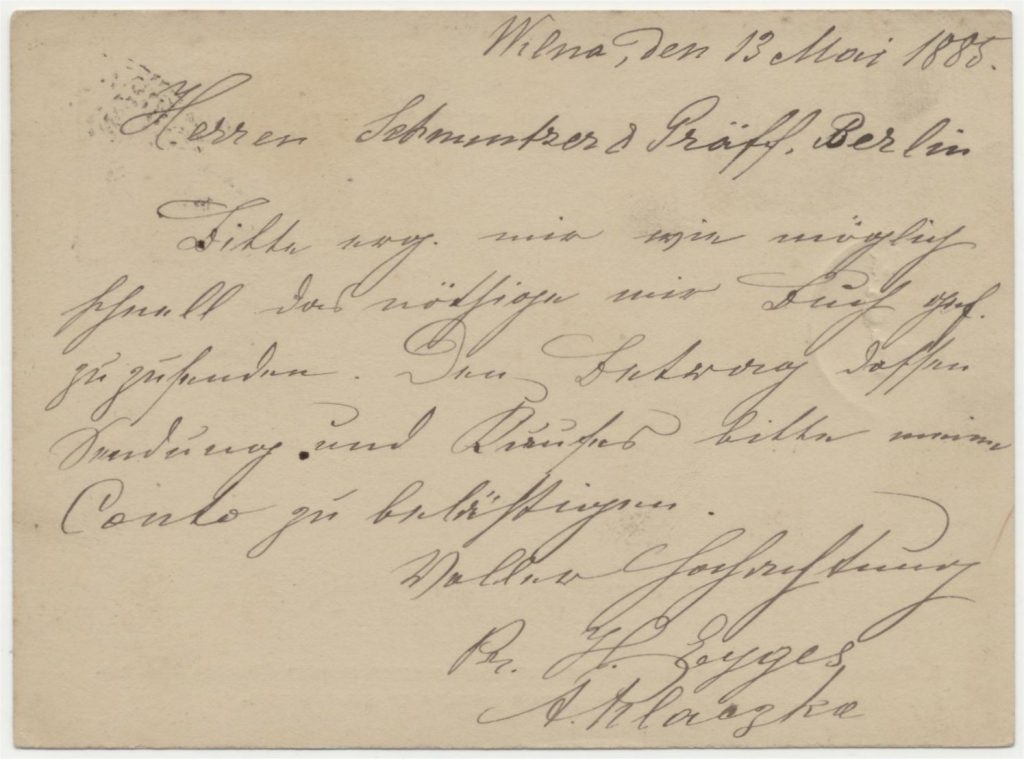
On the letter here below is also used a postmark ВИЛЬНА (Vilna)-2 with at the bottom more information, but different from the letter above. Here is the indication ПОЧТОВАЯ КОНТОРА (POCHTOVAYA KONTORA = Post office).
![The cover here is also registered. The letter 'R' (recommandée = registered) in a circle is used here: for letters sent abroad . For registered letters inland are postmarks with ЗАКАЗНОЕ [ZAKAZNOE] = registered.](http://baltikum.nl/wp-content/uploads/2016/11/vilnius22a-1024x824.jpg)
The cover here is also registered. The letter ‘R’ (recommandée = registered) in a circle is used here: for letters sent abroad . For registered letters inland are postmarks with ЗАКАЗНОЕ [ZAKAZNOE] = registered.
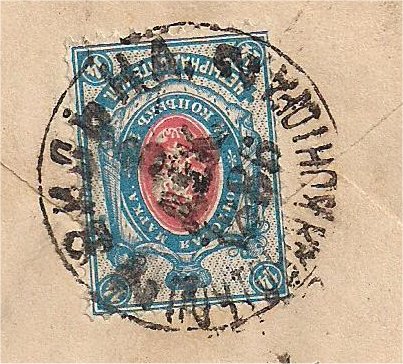
The postage stamp on the other side: 14 kopecks, the rate in for a registered international letter.
About rates in this time: see the site www.sijtzereurich.com/ postal_rates_Lithuania1.html. In the tabel on this site was for registered inland or international letter the rate 14 kopecks between 20-03-1879 – 08-03-1889.
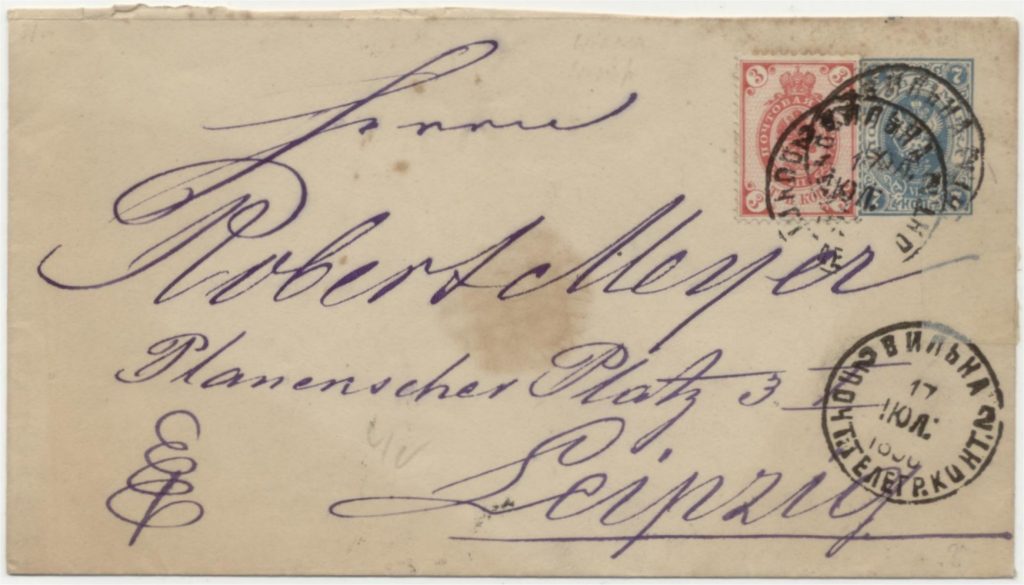
Postmark ВИЛЬНА (Vilna)-2 with at the bottom is indicated more information:
ПОЧТ. ТЕЛЕГР. КОНТ. , the abbrevation for ПОЧТОВО-ТЕЛЕГРАФНАЯ КОНТОРА (POCHTOVO-TELEGRAFNAYA KONTORA = Post-Telegraph Office).
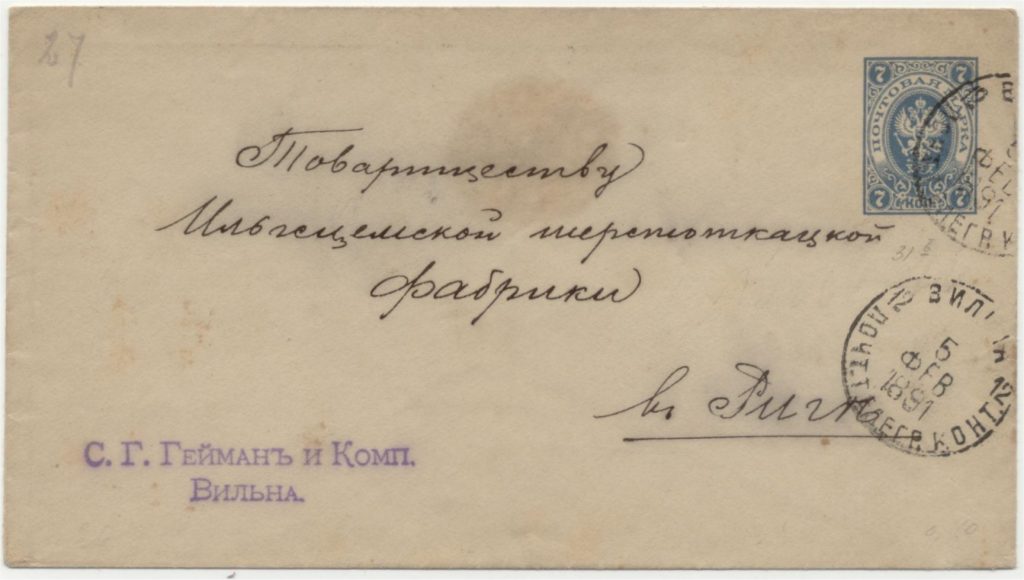
Postal stationary (envelop with imprinted stamp, Mi., nr U33), 5 February 1891.
This letter is sent from Vilnius ВИЛЬНА (Vilna)-12 to Riga. The postmark gives already more information than the early one-ring-postmarks.
At the bottom is indicated:
ПОЧТ. ТЕЛЕГР. КОНТ. , the abbrevation for ПОЧТОВО-ТЕЛЕГРАФНАЯ КОНТОРА (POCHTOVO-TELEGRAFNAYA KONTORA = Post-Telegraph Office).
In june 1884 the postal and telegraph departments were united. In the beginning of the telegraph (since 1866) there were scarcely connections between the post and telegraph, but it was too expensive to let it separated.
From june 1884 there were also two new types of offices: the Post-telegraph Office (Pochtovo-Telegrafnaya Kontora), as we have seen here, for a greater city as Vilnius was, and a Post-Telegrapyh Sub-Office (Pochtovo-Telegrafnoe Otdelenie). These offices combined both services: post and telegraph.
The month in the postmark above is still in cyrillic letters and the year remains directly under the month.

On the reverse side of the cover is placed: arrival postmark of Riga and this local mail postmark.